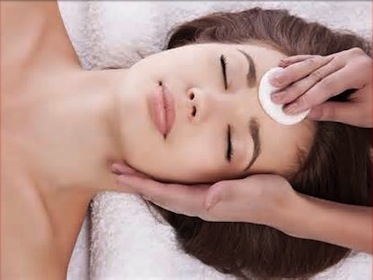 When I was working with Amazon Local to put together an online deal, I suggested a chemical peel as an option. “You don’t want to do that,” the account representative told me, “people get scared at the idea of chemical peels.” The more I thought about this, the more I wondered just how many people are missing out due to misinformation about this extremely powerful tool in the skincare therapist’s arsenal.
When I was working with Amazon Local to put together an online deal, I suggested a chemical peel as an option. “You don’t want to do that,” the account representative told me, “people get scared at the idea of chemical peels.” The more I thought about this, the more I wondered just how many people are missing out due to misinformation about this extremely powerful tool in the skincare therapist’s arsenal.
Chemical peels, used correctly by trained professionals, are highly effective in the treatment of many different skin conditions, including acne, hyperpigmentation (age spots), melasma (“pregnancy mask”), rosacea, dull skin, wrinkles, and many more. Properly selected, they can be used on any skin type, including sensitive skin, and any skin color (unlike microdermabrasion, which should not be used on darker skin).
However, not all chemical peels are created equal. There are literally hundreds of different chemical peels out there. Some have been around for decades, and the research behind them may be outdated by today’s standards. More than one of my clients, presented with the option of a chemical peel, has said, “Oh, you mean a glycolic peel? I have that at home.” Yes, glycolic acid is one of the most common hydroxy acids used in chemical peels, but there are many more, and used in blends with other ingredients, are much more effective. The peels I use are self-timing (which negates the chance of burning), combination peels, specifically tailored for different skin types and conditions, followed by correctives that are address the client’s skin-specific needs and concerns. The peels available to the general public are also much weaker than those available to the skincare therapist.
There is also a mental image many people have of post-treatment “downtime.” We’ve all seen the person who has had a deep chemical peel that was done by a dermatologist. Their face looks like their entire epidermis was removed, and for about two weeks, looks like raw meat. I know that put me off getting a chemical peel for years! However, a skin therapist can only do light to medium peels, not the deep ones a dermatologist can do. I tell my clients they may or may not experience some flaking during days two through five after the peel. There may be no obvious peeling at all, which has actually disappointed some people, who feel they haven’t gotten the maximum benefits of a peel. However, there are still big changes going on at the cellular level, even if no skin is falling off.
Others have heard that they may not wear makeup for several days post-treatment. Not so — at least with the peels I use. While it is best not to use makeup the day of the peel, a mineral-based makeup may be used as soon as an hour after treatment, if you feel you must do so. The day following the procedure, you’ll want to use extra moisturizer, usually several times throughout the day, but otherwise, you may resume your normal makeup routine.
For best results, chemical peels should be done in a series of at least 3, depending on the condition being addressed, and follow-up care at home is essential.
If you’ve been considering trying a chemical peel, it’s well worth a call to your skincare therapist to discuss whether it would be a good option for you. In most cases, the clear, glowing skin that results as a result of chemical peel series is well worth the few days of flaking you may (or may not) experience.
